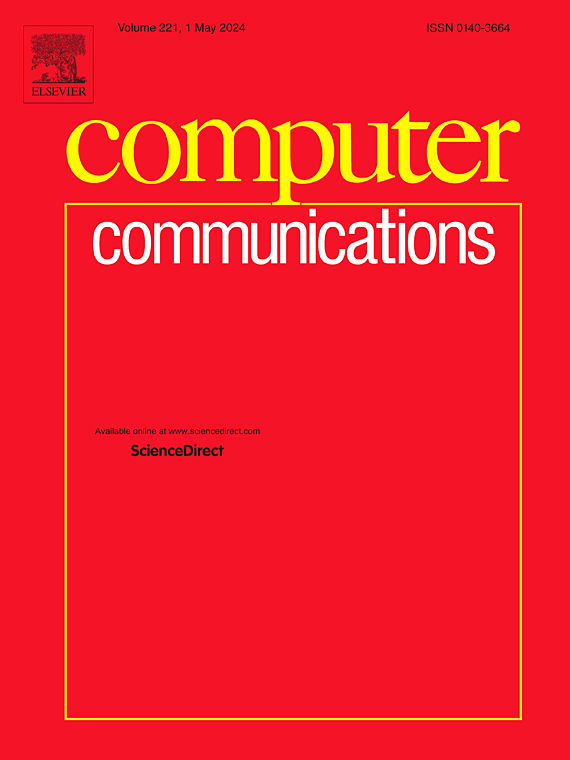SQID:用于下一代物联网资源分配管理的深度学习和网络设计协同
IF 4.5
3区 计算机科学
Q1 COMPUTER SCIENCE, INFORMATION SYSTEMS
引用次数: 0
摘要
移动宽带和物联网(IoT)设备的指数级增长已经将传统的物联网模型推向了其运营极限,需要更有效的数据管理策略。本研究引入了SQID框架,该解决方案集成了先进的技术,包括用于网络优化的Sierpinski三角形设计(STD),用于智能设备聚类的量子密度峰值聚类(QDPC),以及用于深度学习驱动的流量预测的改进深度确定性策略梯度(IDDPG)。该框架通过STD对设备通信进行优化,采用QDPC算法对设备进行高效的集群,保证了分组分配的均衡和时延的最小化。此外,IDDPG还可以实现准确的流量预测和资源分配,提高网络性能,优化数据传输。大量的模拟表明,SQID在时间效率、延迟减少、吞吐量最大化和数据包丢失等关键指标上优于现有方法。这些结果表明,SQID有可能显著改善物联网网络中的数据管理,为下一代物联网的发展铺平道路。本文章由计算机程序翻译,如有差异,请以英文原文为准。
SQID: A deep learning and network design synergy for next-generation IoT resource allocation management
The exponential growth of mobile broadband and Internet of Things (IoT) devices has pushed traditional IoT models to their operational limits, necessitating more efficient data management strategies. This research introduces the SQID framework, a solution that integrates advanced techniques, including Sierpinski triangle design (STD) for network optimization, quantum density peak clustering (QDPC) for intelligent device clustering, and improved deep deterministic policy gradient (IDDPG) for deep learning-driven traffic prediction. By utilizing STD to optimize device communication, the framework applies the QDPC algorithm to efficiently cluster devices, ensuring balanced packet distribution and minimizing latency. Additionally, IDDPG enhances network performance by enabling accurate traffic prediction and resource allocation, optimizing data transmission. Extensive simulations reveal that SQID outperforms existing methods in critical metrics such as time efficiency, latency reduction, throughput maximization, and packet loss. These results indicate that SQID has the potential to significantly improve data management in IoT networks, paving the way for next-generation IoT advancements.
求助全文
通过发布文献求助,成功后即可免费获取论文全文。
去求助
来源期刊

Computer Communications
工程技术-电信学
CiteScore
14.10
自引率
5.00%
发文量
397
审稿时长
66 days
期刊介绍:
Computer and Communications networks are key infrastructures of the information society with high socio-economic value as they contribute to the correct operations of many critical services (from healthcare to finance and transportation). Internet is the core of today''s computer-communication infrastructures. This has transformed the Internet, from a robust network for data transfer between computers, to a global, content-rich, communication and information system where contents are increasingly generated by the users, and distributed according to human social relations. Next-generation network technologies, architectures and protocols are therefore required to overcome the limitations of the legacy Internet and add new capabilities and services. The future Internet should be ubiquitous, secure, resilient, and closer to human communication paradigms.
Computer Communications is a peer-reviewed international journal that publishes high-quality scientific articles (both theory and practice) and survey papers covering all aspects of future computer communication networks (on all layers, except the physical layer), with a special attention to the evolution of the Internet architecture, protocols, services, and applications.
 求助内容:
求助内容: 应助结果提醒方式:
应助结果提醒方式:


